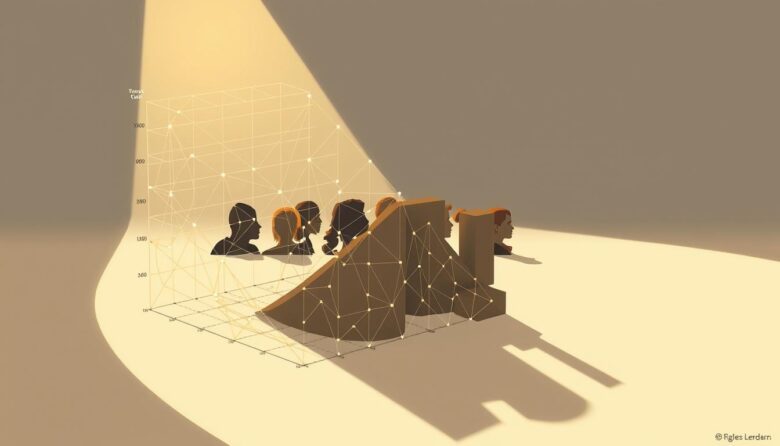Modern romance now thrives on apps promising to simplify connections. Yet beneath the swipe-driven surface, questions arise about whether these platforms truly level the playing field. A revealing experiment by journalist Anita Bhagwandas highlights startling gaps: her profile received just two mismatched responses, while her white friend with identical details got 30+ matches in 24 hours.
This disparity reflects broader patterns. Studies show Black women and Asian men face the lowest match rates on online dating apps. Technical factors compound these issues—image recognition systems often perform poorly for darker skin tones, potentially skewing attractiveness rankings.
The challenge extends beyond code. Historical beauty standards and cultural preferences seep into tech systems, creating invisible filters that shape romantic opportunities. With millions globally relying on these apps, the stakes for fairness grow higher every day.
Transparency remains scarce as companies guard their matching formulas. Users navigate an opaque system where likes and rejections carry unspoken biases. Addressing these concerns requires examining both technical design and the societal values embedded within them.
Dating App Algorithms: A Closer Look
Today’s love seekers navigate platforms powered by vast data networks. Every swipe, message, and profile visit becomes fuel for systems determining who appears in your feed. These apps build intricate behavioral maps using information from multiple touchpoints.
How Platforms Compile Digital Footprints
Dating apps gather details through questionnaires, synced social media accounts, and real-time activity tracking. When users connect Instagram profiles, apps access liked posts and follower lists. They even monitor conversation patterns, prioritizing profiles that successfully exchange contact information.
Behavioral data flows continuously. Each interaction updates the system’s understanding of user preferences, from dealbreakers like age ranges to subtle interests inferred from swipe speed.
The Matchmaking Engine Behind Profiles
Most apps employ collaborative filtering—the same method Netflix uses for recommendations. This system groups users with similar patterns, predicting compatibility based on majority choices. If many people who like hiking profiles also select outdoor enthusiasts, the algorithm reinforces that connection.
These systems prioritize high-impact traits first. A user marking “non-smoker” as essential will see fewer matches with smokers, even if other interests align perfectly. Over time, the machine learning models refine suggestions through millions of daily interactions.
Bias in Dating Algorithms: Data, Design, and Disparities
Love in the digital age faces hidden systemic challenges. Platforms often replicate societal preferences through coded systems, creating unequal outcomes for different groups. A University of Michigan study led by Professor Apryl Williams exposes how blonde women receive disproportionate visibility, even when users show no preference for this trait.
Racial and Physical Bias in Algorithmic Processes
Technical design choices amplify existing inequalities. Williams, a Black woman, discovered her white spouse’s Tinder feed prioritized blonde women despite his swiping patterns. Image recognition tools perform worse for darker skin tones, affecting profile rankings. These systems often mirror historical beauty standards rooted in colonialism.
Impact of Beauty Standards and Racial Hierarchies
Collaborative filtering creates echo chambers. When users engage with certain profiles, platforms exclude diverse options. Hinge’s ethnicity filters—marketed as empowerment tools—risk segregating communities. Experiments show Black women receive 80% fewer matches than white counterparts with identical profiles.
Insights From Academic and User Research
Ben Berman’s Monster Match game reveals how single interactions erase entire groups. If players reject one green monster, the system stops showing all green creatures. This mirrors how apps interpret preferences—one “no” to a trait can eliminate thousands of potential connections. User experience becomes confined by invisible boundaries set during initial swipes.
Tech and Society: Implications for Online Dating
Digital romance platforms operate within cultural frameworks older than the internet itself. The tools shaping modern connections carry centuries-old preferences, repackaged as cutting-edge matchmaking tech.
Cultural Influences and Historical Beauty Standards
Western media’s fixation on blonde hair exemplifies systemic preferences. MIT researchers found this “beauty premium” persists despite lacking biological basis. Tech systems amplify these patterns through design choices favoring Eurocentric features.
Colourism extends beyond romantic platforms. Social media filters automatically brighten skin tones, while job recruitment software penalizes ethnic names. These patterns trace back to colonial-era hierarchies now coded into digital systems.
The shift to app-based connections changes how people evaluate partners. Without scent or body language cues, users rely heavily on photos and text snippets. This creates artificial hierarchies where certain traits become universal currency.
Development teams’ cultural backgrounds shape these systems. Homogeneous tech groups often overlook diverse aesthetic values, prioritizing features popular within their social circles. The result? Platforms that claim neutrality while replicating real-world inequalities.
User Experience and the Role of Data Collection
Behind every swipe lies a complex exchange where users unknowingly train systems to mirror their habits. Platforms absorb signals from profile adjustments, social media links, and even response times to refine match suggestions. This constant data flow shapes who appears in feeds and why.
How Feedback and Social Media Sync Fuel Matching
Connecting Instagram or Spotify accounts gives apps access to likes, playlists, and follower networks. These external signals often override stated preferences. If you follow fitness influencers, the platform might prioritize gym enthusiasts despite your profile claiming to seek book lovers.
Real-time behavior matters most. Rapid right-swipes on profiles with specific traits teach the system to surface similar users. Platforms also track which matches lead to exchanged numbers, using this as a success metric to guide future recommendations.
When Algorithms Resist Change
Journalist Anita Bhagwandas tested these systems by altering her ethnicity settings and adding blonde highlights. Matches diversified immediately, proving how racial categorization drives outcomes. Yet reverting to her authentic identity reset the app’s narrow suggestions.
Many people looking for serious relationships struggle to update their algorithmic reputation. Systems cling to early swiping patterns, delaying new matches even after profile edits. Recent safety features for younger demographics—like Tinder’s authenticity checks—ignore longstanding issues like racial harassment faced by marginalized groups.
Final Thoughts on Shaping a Fairer Dating Landscape
Creating equitable digital spaces for romance demands urgent systemic changes. Professor Apryl Williams’ research reveals how current platforms often fail marginalized groups through inadequate safety measures and rigid matching patterns. Solutions require moving beyond surface-level fixes to address core design flaws.
Transparency remains critical. Users deserve clear explanations about why certain profiles appear in their feeds. Improved reporting tools could combat racial harassment while protecting vulnerable communities. Companies must also recruit diverse development teams to audit datasets and eliminate hidden discrimination.
Industry-wide standards could drive progress. Imagine regulations requiring apps to disclose how ethnicity filters affect match rates or mandating third-party bias testing. User education about preference settings might help people navigate these systems more effectively.
True change extends beyond technology. While better algorithms can reduce harm, addressing deep-rooted cultural attitudes about beauty and race remains essential. The future of digital connection lies in platforms that celebrate human complexity rather than simplifying it.



